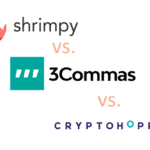Key takeaways:
- In order to accommodate CBDCs and tokenized assets, the Bank of International Settlements (BIS) published a design for a worldwide “unified ledger”.
- According to the BIS report, this ‘single ledger’ would enable automated and seamless integration of financial activities.
The Bank for International Settlements (BIS) has recently unveiled an exciting proposal that could reshape the financial landscape as we know it. With the rise of tokenization, BIS has introduced the concept of a unified ledger, presenting a compelling vision for the future of asset management and financial transactions.
Following a suggestion of a similar sort from the International Monetary Fund (IMF), the Bank of International Settlements unveiled a fresh Unified ledger idea. The suggestion was also made public as a chapter of the organization’s next annual report. The proposal specifically covered the topic of emerging financial technologies.
IMF’s most recent report, which explores the idea of a unified ledger for cross-border payments, was previously made public this week. The BIS Chapter has now provided an explanation of a similar idea that it articulated in a post that was published on Tuesday. despite categorically opposing cryptocurrency advances.
The recently introduced BIS proposal envisions a unified ledger that combines central bank digital currencies (CBDCs) and tokenized assets, creating a cohesive financial market infrastructure. This innovative system would rely on application programming interfaces (APIs) to facilitate seamless integration between different elements of the financial ecosystem.
The authors of the proposal critically evaluate existing financial technologies, emphasizing the significance of central bank money in establishing trust and acting as a unifying force within the financial system.
The proposal also draws attention to a key drawback of current tokenization schemes, highlighting their tendency to operate in isolated silos. In contrast, a unified ledger would integrate the ledgers of various counterparties, incorporating features such as programmed reconciliation and messaging capabilities. This integration would enable faster transactions and simultaneous settlement in a partitioned data environment that offers controlled privacy and transparency.
In a different video posted by the BIS, the chief researcher expanded on the same idea, saying:
Because money and other claims are now stored in several databases connected by third-party messaging systems, transactions must first be reconciled before being settled definitively.
In his words, “tokenization makes all this into one seamless operation.”
In summary, the BIS proposal recognizes the importance of integrating CBDCs and tokenized assets through a unified ledger. By leveraging APIs and addressing the limitations of existing systems, this proposed infrastructure aims to create a more efficient, interconnected, and secure financial ecosystem.









